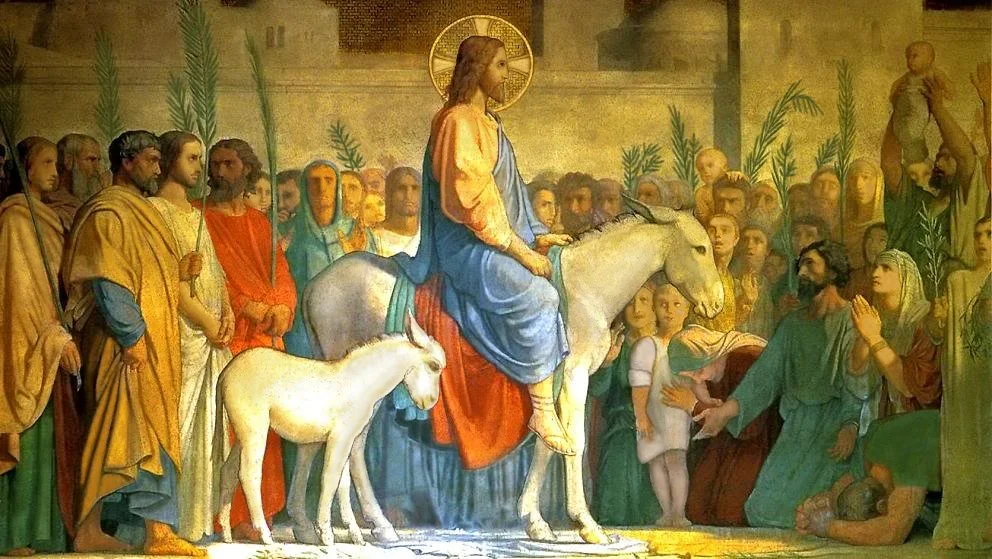Hosanna in the Highest, Blessed is He Who Comes in the Name of the Lord
Palm Sunday: A Passage from the Earthly Jerusalem to the Heavenly Jerusalem
Media of the Middle East Council of Churches (MECC)
It is a Feast of self-purification and the renewal of the inner temple... It is a feast of returning to innocence and simplicity... It is a holy season in which we open our hearts to welcome Jesus Christ, who entered as a King into the Earthly Jerusalem to lift us today to the Heavenly Jerusalem. It is the Palm Sunday, the seventh Sunday of Lent and the last before Easter.
Everyone, without exception, both young and old, clergy and laypeople, joyfully shout with hearts full of hope, "Hosanna in the highest, blessed is He who comes in the name of the Lord!"
On this day, Churches are filled with believers, especially children, who carry candles and prepare with their families to participate in the Palm Sunday procession after attending the Divine Liturgy. This is a symbol of the path of Jesus Christ in the streets of Jerusalem.
Besides the traditions and popular customs that take place for this occasion, we must remember the event of Palm Sunday, which brings much joy, renewal, and faith. It is the day when Jesus Christ entered Jerusalem after leaving Bethany six days before Easter, and walked to the Temple. The crowds of people spread their clothes before Him, while others laid palm branches as a sign of celebration.
But what is the meaning of the word "Palm Sunday"?
In fact, "Palm Sunday" is a Hebrew word derived from "Hosanna," which means "Lord, save us." From this, the Greek word "Hosanna" is derived, which the Church sings on this Feast. As well as, this Feast has many names, including the Feast of the Branches, the Feast of Palms, and the Feast of Hosanna.
Noting that in ancient times, this day was called by different terms, such as "The Sunday of the Worthy," referring to the catechumens who had learned about the Christian faith and wished to commit to it, and also "The Sunday of Head Washing," a custom performed as a sign of purification and preparation for entering the Church.
Returning to the event of Palm Sunday, the Fathers of the Church’ sources explain that with Jesus, one of the Old Testament Prophecies was fulfilled, as stated in the Book of Zechariah: "Behold, your King comes to you! He is righteous, and having salvation; lowly, and riding on a donkey, even on a colt, the foal of a donkey." The donkey symbolizes the Jewish people who carried the tablets of the commandments, while the colt referred to the Gentiles who had not carried the commandments.
In commemoration of this event, today, the faithful carry palm and olive branches to signify that Jesus is the King of the new ages, the King of victory over evil, and the King of peace. Thus, palm fronds symbolize victory and the crown that God grants to the victorious warriors, while olive branches signify peace, and its oil signifies holiness.
Unfortunately, modern popular traditions have overshadowed the true meanings and symbols of Palm Sunday. Our call today is to return to ourselves, purify our souls, and persist in Prayer in order to welcome Jesus Christ with contrite hearts and pure spirits, hoping that our inner peace will restore hope to everyone seeking it amidst the hardships of life.

